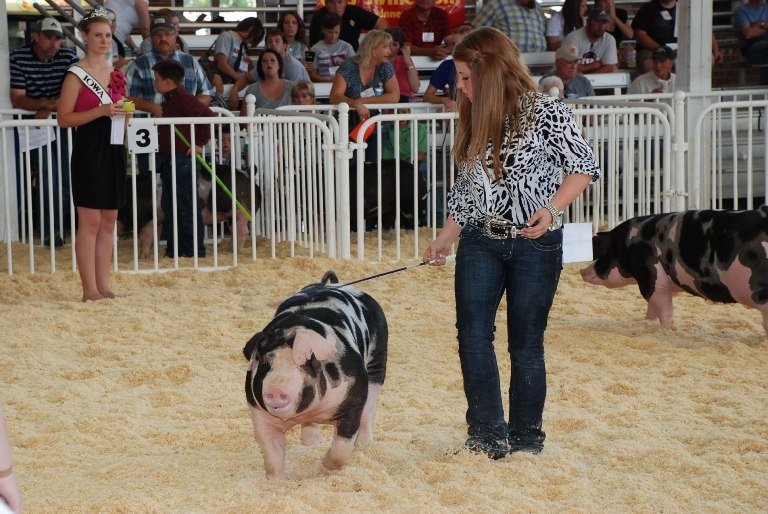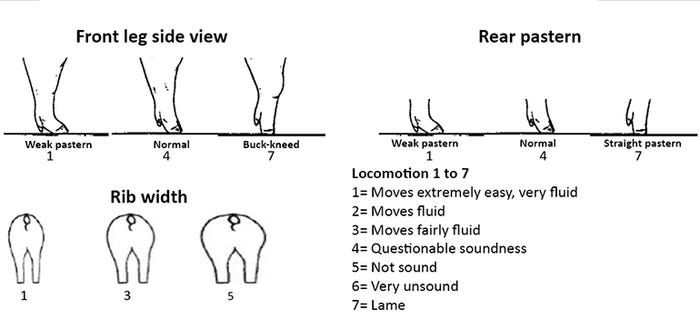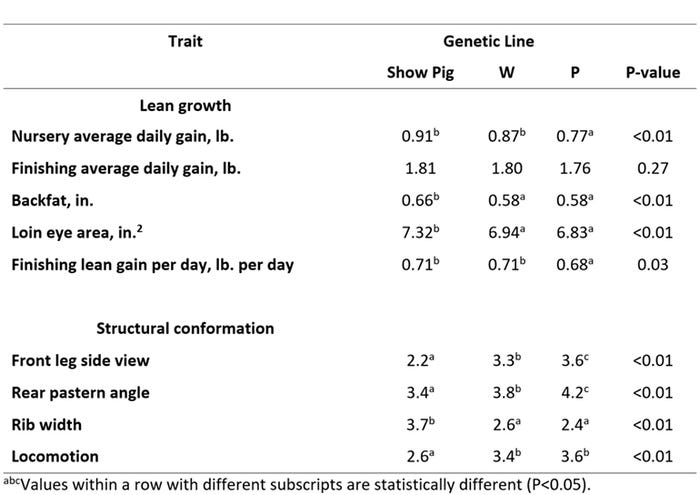Takeaway from this study shows that show pig industry and commercial geneticists can learn from each other.
November 8, 2018

By Mark Knauer, Dalton Obermier and Zack Peppmeier, North Carolina State University
The show pig sector of the swine industry is often thought to be quite different than modern commercial production. While show pig breeders tend to focus on the appearance of an animal, swine geneticists focus on selecting for traits of economic importance. Hence, in theory, modern commercial genetic lines should have superior economic value when compared to show pig genetics.
Our research team evaluated the lean growth and structural conformation of pigs sired by boars from the show pig industry to those sired by modern commercial genetic lines. Data included 174 male pigs from 16 sires and 50 dams. Pigs were sired by Large White show pig sires (SHOW) or one of two maternal Large White commercial genetic lines (W or P). Dams of all pigs evaluated were from line P. Pigs were weaned at 27 days of age and placed into a mechanically ventilated nursery (2.5 square feet per pig). After 35 days in the nursery, pigs moved to a naturally ventilated finisher (8.0 square feet per pig) with fully slatted floors. Weight, 10th rib backfat and loin eye area were collected at 156 days of age. Two technicians visually evaluated pigs for front leg side view, rear pastern angle, rib width and locomotion. The traits front leg side view and rear pastern angle were scored on a seven-point scale where 1 was soft pasterns, 4 was normal and 7 was buck-kneed and straight pasterns, respectively. Rib width was scored on a five-point scale with 5 being wide-ribbed. Locomotion was scored on a seven-point scale where 1 was ideal.

Results for lean growth and structural conformation by genetic line are shown in Table 1. Nursery average daily gain was greater for pigs sired by SHOW and W when compared to P, yet finishing average daily gain did not differ between genetic sources. Pigs sired by SHOW had more backfat and bigger loin eyes when compared to genetic lines W or P. Finishing lean gain per day was greater for SHOW and W when compared to line P. Differences between genetic lines were also seen for structural conformation. Pigs sired by SHOW had better angles to their front leg design and softer rear pasterns than those sired by W or P. Rib width was wider for SHOW when compared to genetic lines W or P and locomotion was superior for SHOW when compared to the other genetic sources.

Table 1: Lean growth and structural conformation traits of pigs sired by either Large White show pig sires or Large White commercial genetic lines (W and P).
Going back to our original question, can show pig genetics compete with those developed by highly trained geneticists? Perhaps the answer is both yes and no. The current study evaluated genetic lines known for their maternal characteristics. Hence to capture the full economic value of each genetic line we would need to evaluate reproductive performance. We would assume genetic lines W and P would sell more full-value market pigs per sow per year as geneticists have focused selection heavily on litter size. Yet the show pig genetics had similar growth rates to the commercial genetic lines and had superior structural conformation, an important trait for sow longevity.
Perhaps the takeaways from this study are 1) both the show pig industry and commercial geneticists can learn from each other and 2) there are perhaps segments of the show pig industry that can contribute to modern commercial line genetics.
Questions can be directed to Mark Knauer.
You May Also Like



